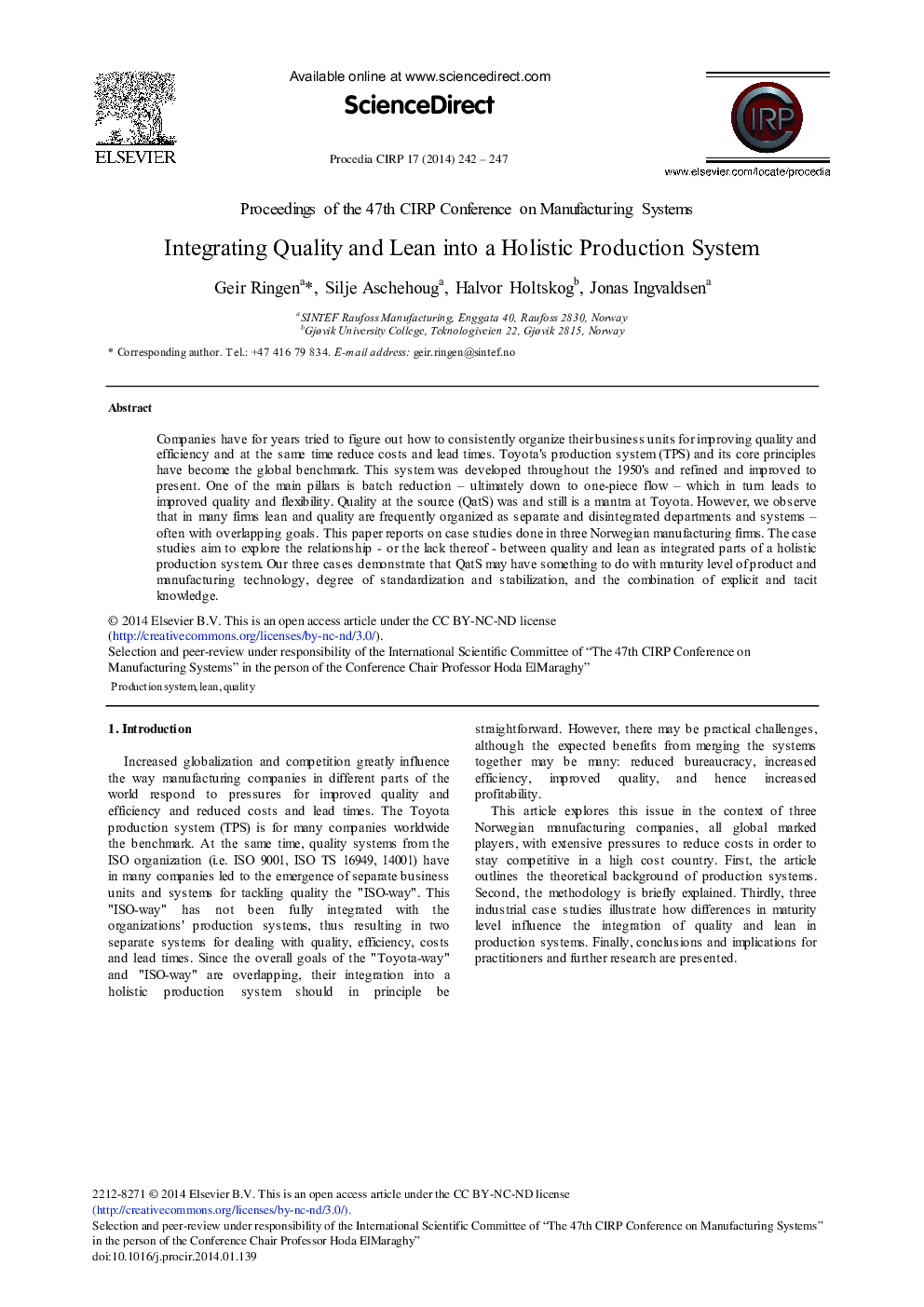| Article ID | Journal | Published Year | Pages | File Type |
|---|---|---|---|---|
| 1700380 | Procedia CIRP | 2014 | 6 Pages |
Companies have for years tried to figure out how to consistently organize their business units for improving quality and efficiency and at the same time reduce costs and lead times. Toyota's production system (TPS) and its core principles have become the global benchmark. This system was developed throughout the 1950's and refined and improved to present. One of the main pillars is batch reduction – ultimately down to one-piece flow – which in turn leads to improved quality and flexibility. Quality at the source (QatS) was and still is a mantra at Toyota. However, we observe that in many firms lean and quality are frequently organized as separate and disintegrated departments and systems – often with overlapping goals. This paper reports on case studies done in three Norwegian manufacturing firms. The case studies aim to explore the relationship - or the lack thereof - between quality and lean as integrated parts of a holistic production system. Our three cases demonstrate that QatS may have something to do with maturity level of product and manufacturing technology, degree of standardization and stabilization, and the combination of explicit and tacit knowledge.
